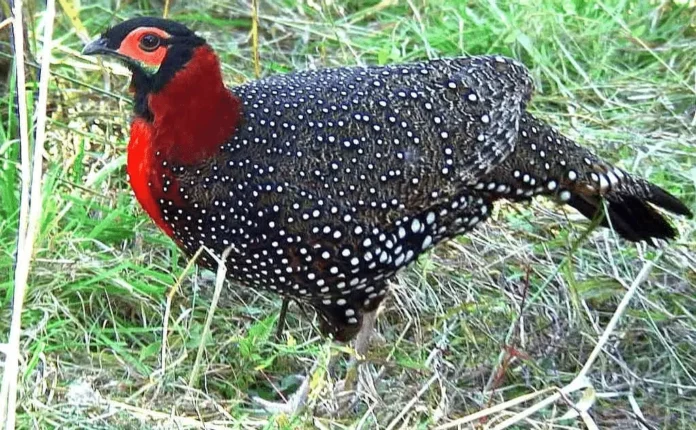PESHAWAR, Apr 03 (APP): A recent research survey has revealed presence of the stunning and elusive Western Tragopan (Tragopan melanocephalus) in the Allai Valley of Battagram district, marking the first-ever recorded population of this rare pheasant species in the area.
Mohibullah Naveed, a dedicated wildlife conservationist and member of the survey team, shared the exciting discovery.
“Finding the Western Tragopan in Allai is a significant breakthrough for conservation as this magnificent bird was previously known only in isolated pockets of Kohistan and a few other regions in Khyber Pakhtunkhwa,” Naveed told APP.
The presence of the Western Tragopan in Allai Valley signals hope for biodiversity conservation in the region.
Known for its striking plumage and shy nature, this endangered species is highly sensitive to habitat loss, making its discovery in a new location a crucial development for wildlife experts, he believed.
Mohibullah said the Western Tragopan is a globally threatened bird species and this finding will expand the known range of the species, offering new opportunities for research and protection efforts.
The first ever preliminary survey for Western Horned Tragopans and other Himalayan Pheasants was conducted in 2024 under the supervision of Himalayan Wildlife Foundation with the collaboration of KPK Wildlife Department (Battagram Wildlife Division) & Wildlife Ecology Lab, University of Haripur, Mohibullah added.
The aim of the survey was to collect baseline population data of the Himalayan pheasants within the study area, primarily focusing on highly threatened Western Horned Tragopans for the effective management and conservation of this vulnerable species facing severe threats to its survival, he added.
The survey team conducted line transect surveys throughout the potential habitats and used local hunting dogs to flush the pheasants during line transect sampling.
Furthermore 20 camera traps were installed at potential sites. Total 8 Western Horned Tragopans were directly sighted during survey and feathers of male Western Horned Tragopan were also found.
Mohibullah apprised that Allai Valley is located in the Western Himalayas in District Battagram of KPK province and spans over an area of approximately 56,081 hectares. It is surrounded by the Kohistan Valley to the north, Chaur’s pasture meadows to the east, Nandiar Valley to the south, and the Indus River to the west.
During the survey five teams were deployed in different sites for line transect surveys and each team surveyed a minimum of 5 km transect in potential habitats selected based on the ecological preferences of the species.
Teams comprised two observers, a trained pointer dog, and a local guide with extensive knowledge of the terrain and wildlife.
Indirect signs of pheasant presence, such as feathers and droppings, were also recorded along the transects to provide additional evidence of species occurrence.
The population densities of three Himalayan pheasant species—Western Horned Tragopan (Tragopan melanocephalus), Himalayan Monal (Lophophorus impejanus), and Koklass Pheasant (Pucrasia macrolopha)—were estimated in a 37.25 km² surveyed area.
The estimated population density of Tragopans was 0.27 individuals/km², indicating a sparse distribution. The low density suggests that Tragopans may be present in fragmented patches, possibly due to habitat specificity or human-induced pressures such as habitat degradation and hunting.
The population density of Monals was recorded as 1.61 individuals/km², the highest among the three species. This relatively higher density aligns with the species’ known adaptability to diverse elevations and habitat conditions. However, localized threats such as poaching and habitat encroachment may still impact their population.
While the density of Koklass Pheasants was estimated at 0.94 individuals/km², indicating a moderate presence in the area. The species prefers dense forest cover, and its population density could reflect habitat suitability and availability.
The survey team made a recommendation of conducting further surveys across different seasons to capture population fluctuations. Investigate habitat conditions and anthropogenic threats affecting these species.
It also emphasizes the need for community involvement and stricter anti-poaching measures to protect this rare bird. Further studies will assess the population size and habitat conditions to guide long-term conservation strategies.
Implementation of conservation strategies to protect key habitats, especially for the Western Horned Tragopan is also suggested.
Research survey discovers highly rare, elusive Western Tragopan pheasant in Allai Valley of KP
- Advertisement -
- Advertisement -
- Advertisement -

